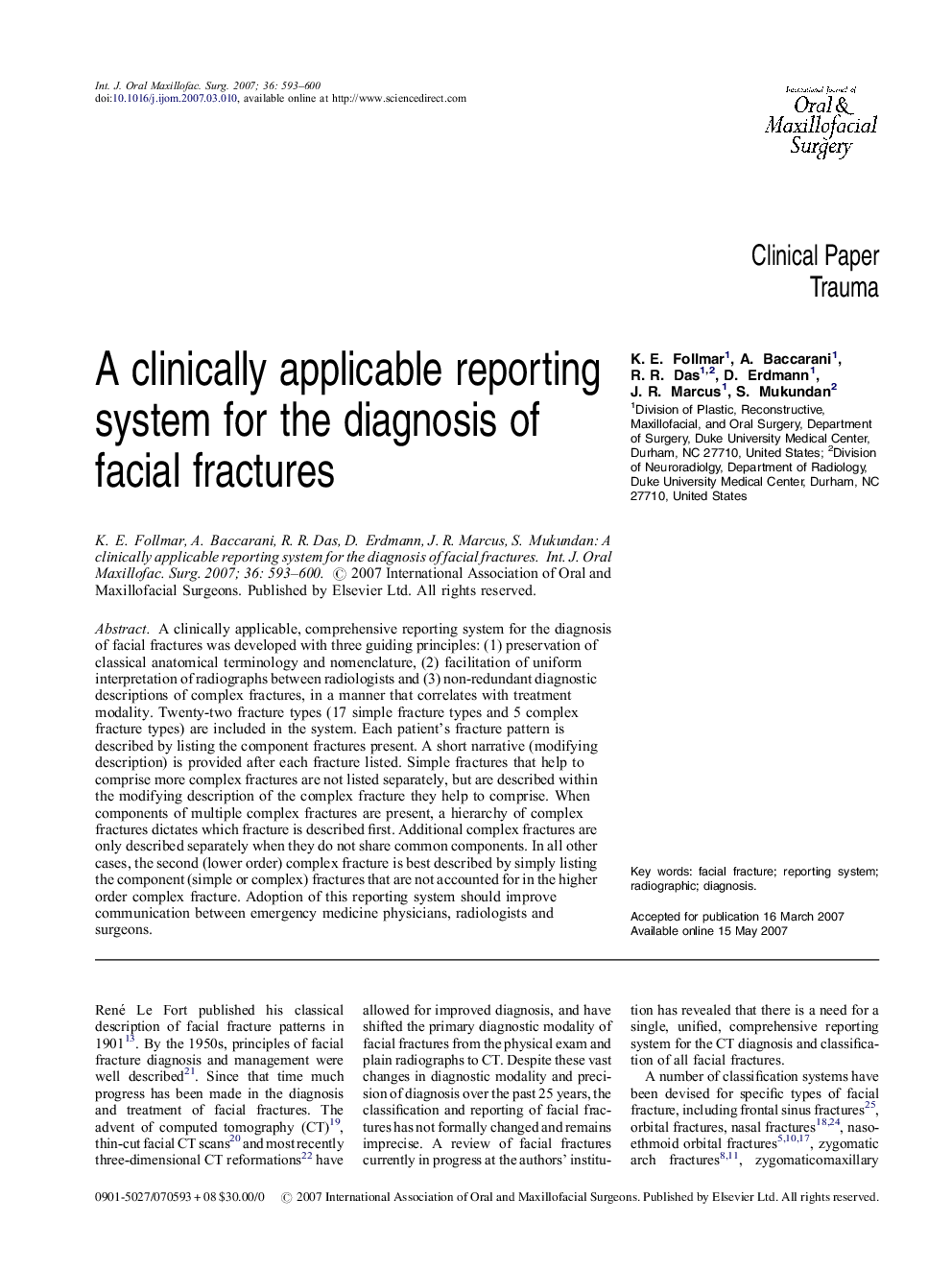| Article ID | Journal | Published Year | Pages | File Type |
|---|---|---|---|---|
| 3135184 | International Journal of Oral and Maxillofacial Surgery | 2007 | 8 Pages |
A clinically applicable, comprehensive reporting system for the diagnosis of facial fractures was developed with three guiding principles: (1) preservation of classical anatomical terminology and nomenclature, (2) facilitation of uniform interpretation of radiographs between radiologists and (3) non-redundant diagnostic descriptions of complex fractures, in a manner that correlates with treatment modality. Twenty-two fracture types (17 simple fracture types and 5 complex fracture types) are included in the system. Each patient's fracture pattern is described by listing the component fractures present. A short narrative (modifying description) is provided after each fracture listed. Simple fractures that help to comprise more complex fractures are not listed separately, but are described within the modifying description of the complex fracture they help to comprise. When components of multiple complex fractures are present, a hierarchy of complex fractures dictates which fracture is described first. Additional complex fractures are only described separately when they do not share common components. In all other cases, the second (lower order) complex fracture is best described by simply listing the component (simple or complex) fractures that are not accounted for in the higher order complex fracture. Adoption of this reporting system should improve communication between emergency medicine physicians, radiologists and surgeons.
